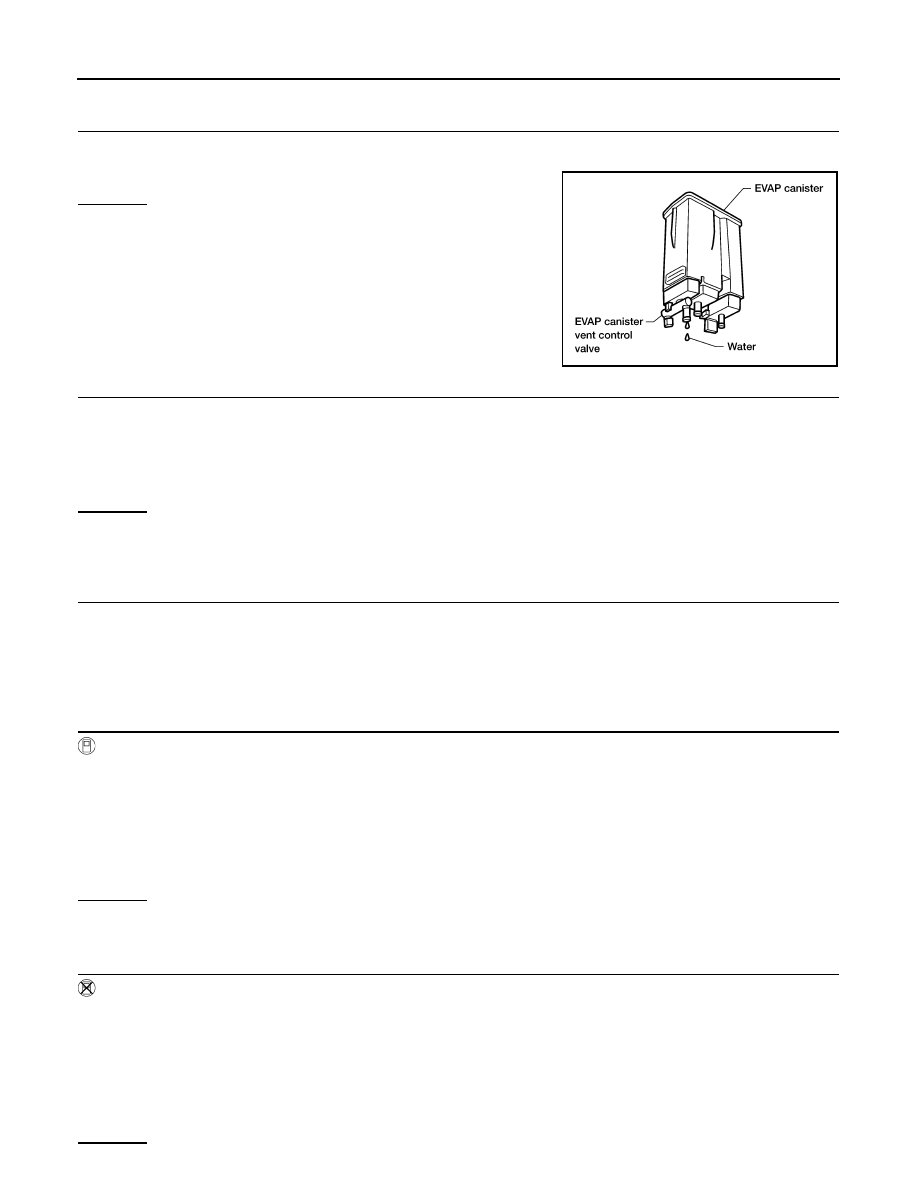Nissan Titan A60. Manual - part 414

EC-322
< DTC/CIRCUIT DIAGNOSIS >
[VK56DE]
P0456 EVAP CONTROL SYSTEM
NG
>> Repair or replace EVAP canister vent control valve and O-ring.
10.
CHECK IF EVAP CANISTER SATURATED WITH WATER
1. Remove EVAP canister with EVAP canister vent control valve and EVAP control system pressure sensor
attached.
2. Does water drain from the EVAP canister?
Yes or No
Yes
>> GO TO 11.
No (With CONSULT-III)>>GO TO 13.
No (Without CONSULT-III)>>GO TO 14.
11.
CHECK EVAP CANISTER
Weigh the EVAP canister with the EVAP canister vent control valve and EVAP control system pressure sensor
attached.
OK or NG
OK (With CONSULT-III)>>GO TO 13.
OK (Without CONSULT-III)>>GO TO 14.
NG
>> GO TO 12.
12.
DETECT MALFUNCTIONING PART
Check the following.
• EVAP canister for damage
• EVAP hose between EVAP canister and drain filter for clogging or poor connection
>> Repair hose or replace EVAP canister.
13.
CHECK EVAP CANISTER PURGE VOLUME CONTROL SOLENOID VALVE OPERATION
With CONSULT-III
1. Disconnect vacuum hose to EVAP canister purge volume control solenoid valve at EVAP service port.
2. Start engine.
3. Perform “PURG VOL CONT/V” in “ACTIVE TEST” mode.
4. Touch “Qu” on CONSULT-III screen to increase “PURG VOL CONT/V” opening to 100%.
5. Check vacuum hose for vacuum when revving engine up to 2,000 rpm.
OK or NG
OK
>> GO TO 16.
NG
>> GO TO 15.
14.
CHECK EVAP CANISTER PURGE VOLUME CONTROL SOLENOID VALVE OPERATION
Without CONSULT-III
1. Start engine and warm it up to normal operating temperature.
2. Stop engine.
3. Disconnect vacuum hose to EVAP canister purge volume control solenoid valve at EVAP service port.
4. Start engine and let it idle for at least 80 seconds.
5. Check vacuum hose for vacuum when revving engine up to 2,000 rpm.
OK or NG
BBIA0351E
SWB models:
The weight should be less than 2.5 kg (5.5 lb).
LWB models:
The weight should be less than 3.2 kg (7.1 lb).
Vacuum should exist.
Vacuum should exist.